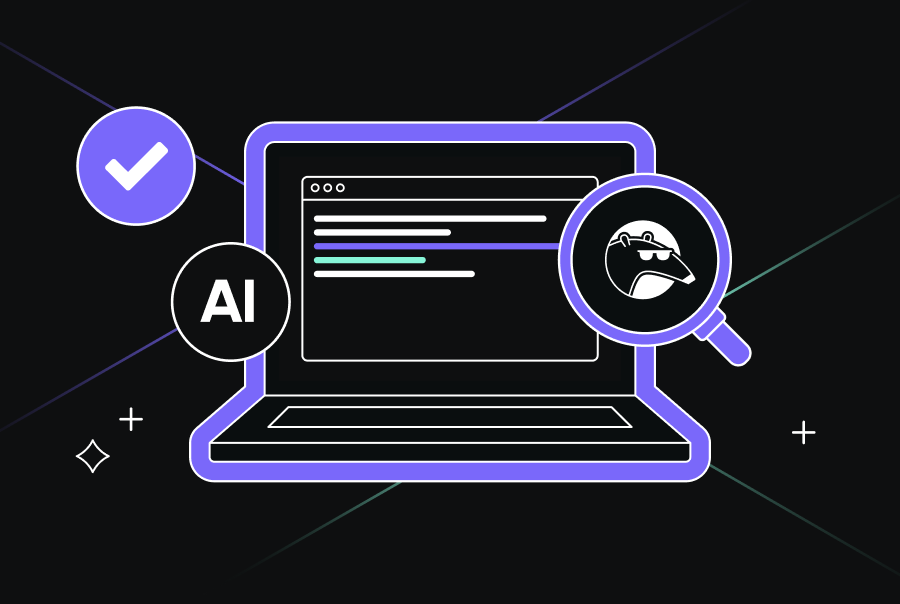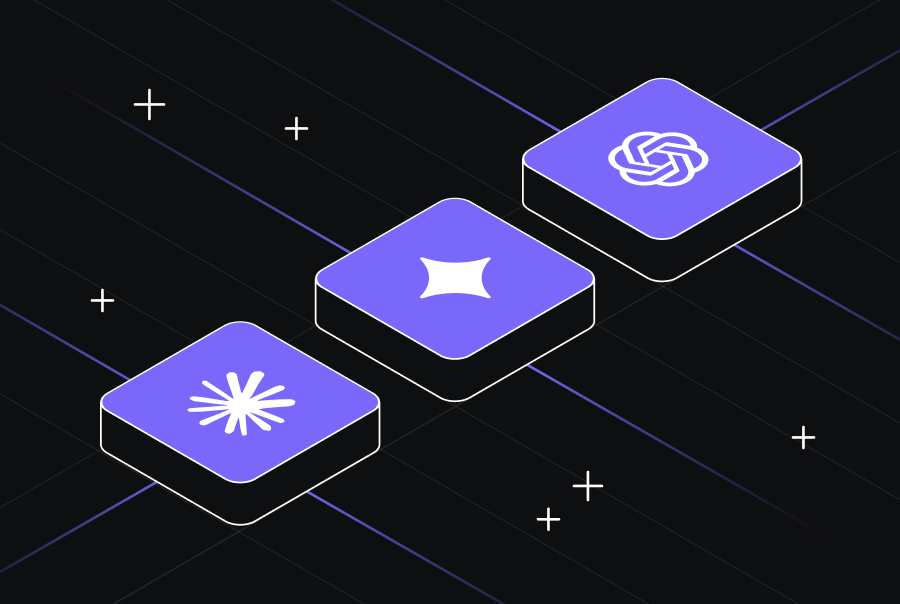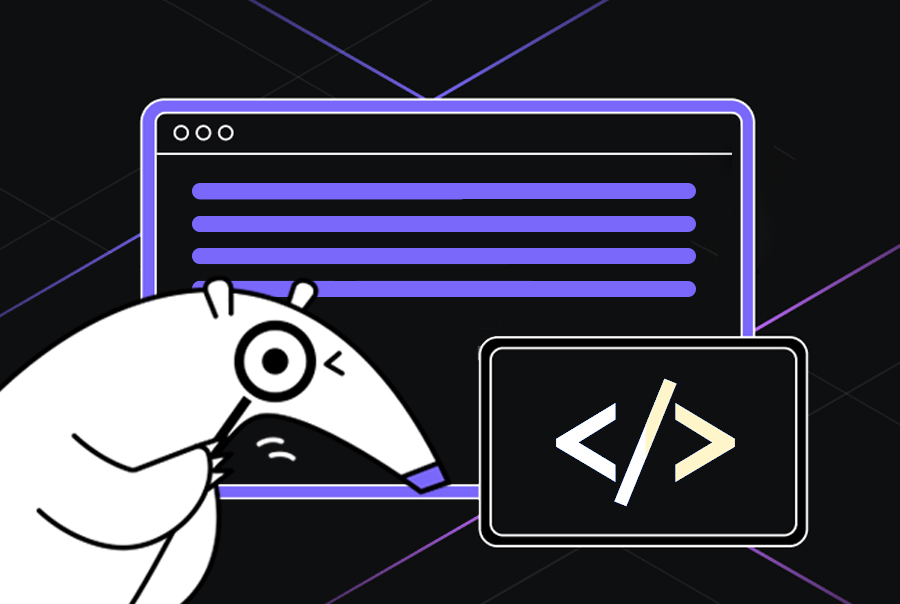Building Your First AI Agent with Qodo
It’s 2 AM and your React app is down. Error messages are flooding your monitoring dashboard, users are complaining on social media, and your team is scrambling to figure out what went wrong.
Sound familiar? Every developer has been there: frantically digging through logs, checking recent deployments, and trying to piece together the root cause while the clock ticks and pressure mounts.
Manual production debugging is not only stressful, but also inefficient. You’re repeating the same diagnostic steps, checking the same logs, and following the same troubleshooting patterns every time an issue occurs. But this is just one example of the repetitive, complex workflows that plague modern development teams.
Whether it’s triaging production issues, conducting thorough code reviews, writing comprehensive documentation, or managing deployment pipelines, developers spend countless hours on tasks that follow predictable patterns but require deep domain expertise. What if you could capture that expertise and turn it into automated AI agents?
That’s exactly what Qodo Command enables. Instead of building generic automation scripts, you can create sophisticated AI agents that understand your specific development context, follow your current methodologies, and make intelligent decisions based on what they discover.
In this post, we’ll use Qodo to build a production triage agent. This agent will:
- automatically analyze React components
- investigate errors
- and provide root cause analysis
But remember, this is just one use case. The same principles apply whether you’re building agents for code reviews, documentation generation, security audits, or any other development workflow.
By the end of this tutorial, you’ll have a working production triage agent and understand the patterns for integrating automation and AI across your entire development lifecycle.
What You’ll Build
- Automatically assess production issues and their severity
- Analyze React component problems including props, state, and lifecycle issues
- Investigate JavaScript errors, TypeScript issues, and API integration problems
- Perform performance analysis to identify bottlenecks
- Generate actionable insights and recommendations
The entire process will be automated, repeatable, and customizable to your specific application needs.
Prerequisites
Before we dive in, make sure you have Qodo Command installed on your system – you can use it free!
npm install -g @qodo/command
If you haven’t installed Qodo Command yet, head over to the official documentation for installation instructions.
Understanding Agent Architecture
Before we start building, let’s understand what makes Qodo agents special. Unlike simple scripts that execute linear commands, Qodo agents are intelligent, context-aware automation tools that can make decisions, use various tools, and adapt their behavior based on what they discover.
A Qodo agent is defined by a .toml configuration file that specifies:
- Trigger – When the agent activates (e.g. PR opened, CI failed, webhook hit)
- Input – What data it receives
- Action – What it does using tools and instructions
- Result – What output it returns
Think of it as creating a junior developer who never gets tired, never forgets steps, and always follows your exact methodology.
Setting Up Your Agent
Let’s start by creating our production triage agent. Create a new file called production_triage.toml in your project’s agents directory:
# production_triage.toml version = "1.0" [commands.production_triage] description = "Diagnose and triage production issues for React UI components, providing root cause analysis and actionable remediation steps" instructions = """ Your role is to diagnose and triage production issues related to React UI components. Follow these systematic steps: """
This basic structure defines our agent’s purpose and sets up the foundation. The version field ensures compatibility, while the commands.production_triage section defines what happens when someone runs our agent.
The description is crucial—it tells users (and the agent itself) exactly what this tool does. The instructions field is where we’ll define the agent’s behavior and methodology.
Defining the steps your agent takes
Now let’s add the first phase of our diagnostic process. This phase gathers initial information about the production issue:
instructions = """ Your role is to diagnose and triage production issues related to React UI components. Follow these systematic steps: 1. INITIAL ASSESSMENT PHASE - Gather information about the production issue (error messages, symptoms, affected components) - Identify the severity and impact of the issue - Check recent deployments and changes that might have triggered the issue - Review production logs and error tracking systems - Determine if this is a new issue or a recurring problem When gathering information, always ask for: - Specific error messages or symptoms users are experiencing - Which components or pages are affected - Time when the issue started - Any recent deployments or changes - Current user impact (how many users affected) Use the following tools to investigate: - Check git logs for recent changes - Review monitoring dashboards - Analyze error tracking systems - Examine server logs """
This phase establishes the foundation for our investigation. The agent will systematically gather information rather than jumping randomly between different debugging approaches. Notice how we’re being specific about what information to collect—this ensures consistency across different incidents.
Next, let’s add the React-specific analysis phase. This is where our agent demonstrates its understanding of React applications:
2. COMPONENT ANALYSIS PHASE - Identify which React components are affected - Analyze component props, state, and lifecycle issues - Check for rendering problems, performance bottlenecks, or memory leaks - Review component dependencies and their versions - Examine CSS/styling issues that might affect component display For React component analysis: - Use directory_tree to understand project structure - Read component files to analyze code patterns - Check package.json for dependency versions - Look for common React antipatterns: * Unnecessary re-renders * Missing dependency arrays in hooks * Incorrect state updates * Memory leaks in useEffect * Props drilling issues Pay special attention to: - Recent changes in component files - State management patterns (Redux, Context, local state) - Component lifecycle and hooks usage - Props validation and TypeScript types """
This phase shows the power of Qodo custom agents—they can understand domain-specific concepts like React components, hooks, and common patterns. The agent will automatically look for React-specific issues that a generic debugging tool might miss.
Now let’s add the error investigation phase, which digs deeper into technical issues:
3. ERROR INVESTIGATION PHASE - Analyze JavaScript console errors and stack traces - Check for TypeScript type errors or runtime type mismatches - Investigate API integration issues or data fetching problems - Review browser compatibility issues - Check for missing or incorrect environment variables For error investigation: - Parse stack traces to identify the exact source of errors - Check for common JavaScript errors: * Null/undefined reference errors * Type mismatches * Async/await issues * Promise rejection handling - Investigate API-related problems: * Network request failures * CORS issues * Authentication problems * Data format mismatches - Review environment-specific issues: * Missing environment variables * Configuration differences between environments * Build process problems Use browser developer tools concepts to analyze: - Console errors and warnings - Network request failures - Performance bottlenecks - Memory usage patterns """
This phase demonstrates how agents can be given sophisticated analytical capabilities. Instead of just running commands, the agent understands how to interpret error messages, stack traces, and common patterns that indicate specific types of problems.
Let’s add the final phase focused on performance issues:
4. PERFORMANCE ANALYSIS PHASE - Measure component render times and re-render frequency - Identify unnecessary re-renders or inefficient state updates - Check bundle size and code splitting effectiveness - Analyze network requests and API response times - Review memory usage patterns and potential leaks For performance analysis: - Look for React-specific performance issues: * Components rendering too frequently * Large component trees * Inefficient list rendering (missing keys) * Heavy computational work in render methods - Check bundle and loading performance: * Bundle size analysis * Code splitting effectiveness * Lazy loading implementation - Analyze network performance: * API response times * Unnecessary API calls * Large payload sizes * Missing caching strategies Always provide specific recommendations for improvement, not just problem identification. 5. REPORTING PHASE - Summarize findings in a clear, actionable report - Prioritize issues by severity and impact - Provide specific remediation steps - Include code examples where helpful - Suggest preventive measures for the future """
Notice how we added a reporting phase—this ensures the agent doesn’t just find problems but also communicates them effectively to developers who need to fix them.
Testing Your Agent
Now let’s test our agent. Save your production_triage.toml file and run it:
# Run the agent on your React project qodo production_triage # Or run it on a specific directory qodo production_triage --path /path/to/your/react/app
When you run the agent, it will start by exploring your project structure, then systematically work through each phase. You might see output like:
🔍 Starting production triage analysis... 📋 INITIAL ASSESSMENT PHASE - Used tool: directory_tree - Found React project structure - Checking recent git changes... - Used tool: git_log - Found 3 recent commits in the last 24 hours 🔧 COMPONENT ANALYSIS PHASE - Analyzing React components... - Found 15 components in src/components/ - Checking for common React issues... - Used tool: read_file to analyze Button.jsx - ⚠️ Found potential issue: useEffect missing dependency array 🚨 ERROR INVESTIGATION PHASE - Checking for JavaScript errors... - Found TypeError in UserProfile component - Stack trace points to line 42 in UserProfile.jsx - Issue: Cannot read property 'name' of undefined 📊 PERFORMANCE ANALYSIS PHASE - Analyzing bundle size... - Found large components that could be optimized - Checking for unnecessary re-renders... 📑 SUMMARY REPORT High Priority Issues: 1. TypeError in UserProfile component (line 42) 2. Missing dependency array in useEffect (Button.jsx) Recommendations: 1. Add null check for user object in UserProfile 2. Add proper dependency array to useEffect hook 3. Consider code splitting for large components
Next Steps Extensions
Now that you have a working production triage agent, here are some ways to extend it:
- Add More Phases: Include database analysis, third-party service checks, or security audits
- Build Related Agents: Create agents for deployment validation, performance monitoring, or code reviews
- Integration Expansion: Connect to more monitoring tools, communication platforms, or ticketing systems
- Team Collaboration: Share agents across your team and build a library of diagnostic tools
You can also explore the Qodo Agent Repo for more examples and inspiration from the community.
Conclusion
Congratulations! You’ve just built an intelligent production triage agent that can automatically diagnose React application issues. This agent will save you countless hours of manual debugging and ensure consistent, thorough investigation of production problems.
Qodo Command is the foundation for intelligent, programmable developer workflows. Building agents lets you codify best practices, automate repetitive toil, and embed AI into places where it makes your job easier, not harder.
Ready to build your next agent? Try creating one for deployment validation, performance monitoring, or code review. The possibilities are endless when you can encode your expertise into intelligent, reusable agents.
Submit your agent in our challenge for a chance to win $2,000. Link to landing page.
Want to learn more about building sophisticated agents? Check out our agent playbook repo to explore the agent examples on GitHub.


